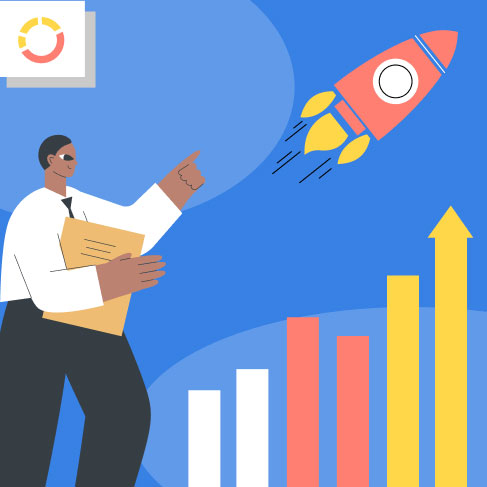Digital Product Design for Sustainability
February 2, 2023 | Read Time : 3 mins
Table of Contents
When it comes to physical products, sustainability has evolved into a widely accepted concept and a familiar part of our everyday life. What is novel is that we are gradually discovering that the digital world is the same as everything else.
Additionally, sustainability is gaining popularity in digital products due to its observable advantages, including its positive effects on the environment, society, and the economy.
What is Sustainability?
Sustainability is a design and development approach that focuses on environmental, social, and economic concerns that are generally ignored.
How digital product design contributes to CO2 emissions?
- Data Centers and E-waste: Every activity on a website or online platform requires storage for your projects, files, texts, papers, and other material. While you may be relieved that you have preserved your data, the data in cloud storage is detrimental to the environment.
Notifications have taken the role of daily newspaper delivery, emails have replaced receipts, and virtual clouds have replaced boxes of photos. At first glance, this appears to be a natural approach to creating a more sustainable planet. Consequently, we gorge ourselves on this virtually limitless space rather than using our power to build simple solutions to complex problems. The accumulation of all this content has an impact beyond the carbon that is created by the servers that store it. It affects us: we lose track of what is important and what we should save. - Mobile and Energy Consumption: Every day, a new smartphone is introduced. The increasing number of these gadgets serves energy-hungry people, making them somewhat clueless about the environment. Producing smartphones and delivering them to end users significantly influences CO2 emissions. For example, one iPhone takes many hours to manufacture and assemble and can travel hundreds of thousands of miles, using fuel and energy.
Ways to implement sustainable digital product design
Here are a few effective ways to make designs sustainable:

Measuring carbon emissions footprint
It’s pointless to create anything if you can’t measure it. And if you can’t measure it, you’ll never be able to manage it. When designing a sustainable user experience, it is necessary to analyze existing studies on current online emissions and energy use. The main goal must be to understand how this information may be leveraged to estimate and minimize website pollution.
Create accessible experiences
If the website’s content is light, efficiently guides the user, and assists them in recognizing value, the total experience grows into an approachable dimension.
The clarity of the webpage is also important. Lower carbon emissions result from less clutter and faster loading. When content is provided with clarity and direction, it establishes a connection between sustainability and user experience.
Optimize website performance
Websites built using a user-centered approach may incur performance issues that affect the user experience. By optimizing the site, you not only reduce data consumption and emissions but also engage and delight users.
Educate about sustainability
Designing for a better environment earns good results when users interact with the design. Users are generally unaware of what a clean and environmentally friendly website looks like, even if they are concerned about the environment in other ways.
Designers are responsible for providing direction regarding sustainable design while inspiring people to reach green goals more effectively. However, we must consider what we are designing, how people will use it, and how it represents our plan for creating a safer atmosphere. The intention should be clear throughout the website’s messaging.






